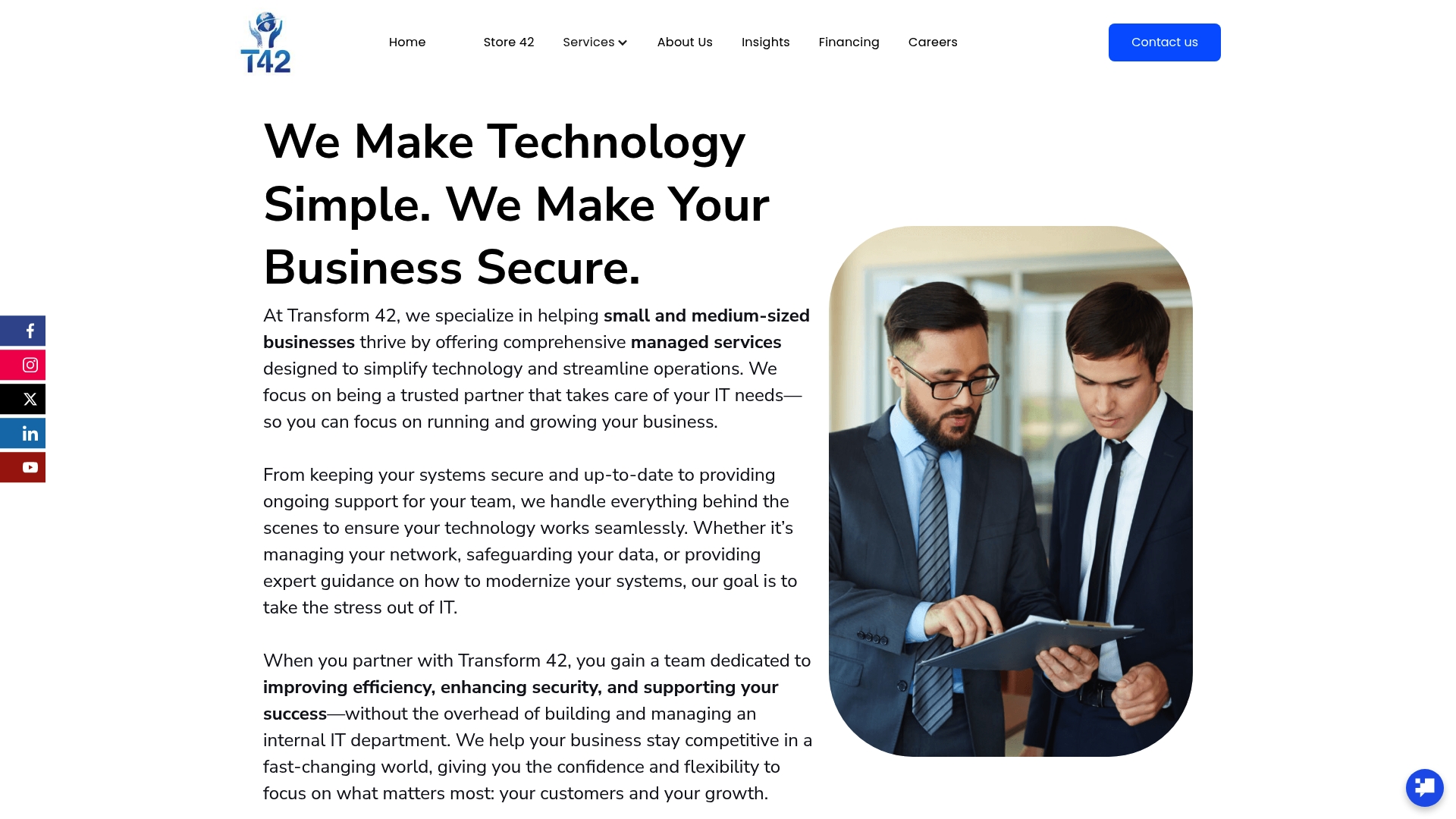Understanding Business Agility Explained: Key Concepts

Business agility sounds like just another management buzzword, but it has become a vital survival skill in a world where change can hit overnight. Organizations described as highly agile are twice as likely to succeed with new initiatives compared to less adaptable competitors. You might think agility is just about moving fast, but it’s actually a complete shift in how a company thinks, plans, and innovates—and the biggest benefits are showing up in places nobody expected.
Table of Contents
- Defining Business Agility: What It Is And Why It Matters
- The Importance Of Business Agility In Professional Firms
- Core Principles Of Business Agility: Flexibility And Responsiveness
- Real-World Applications Of Business Agility In Various Industries
- Challenges And Opportunities In Achieving Business Agility
Quick Summary
| Takeaway | Explanation |
|---|---|
| Business agility enhances competitive advantage. | Organizations that adopt business agility can better respond to market changes and client needs, fostering growth even in uncertain environments. |
| Cross-functional collaboration is essential. | Agile organizations benefit from teamwork across departments, promoting flexibility and faster decision-making processes. |
| Continuous learning drives innovation. | A culture of ongoing learning encourages organizations to adapt and innovate, keeping them ahead of competitors. |
| Flexible resource allocation is crucial. | Being able to reallocate resources quickly allows organizations to respond swiftly to emerging market dynamics and challenges. |
| Overcoming resistance is vital for success. | Addressing structural and cultural challenges is necessary to implement business agility effectively throughout the organization. |
Defining Business Agility: What It Is and Why It Matters
Business agility represents an organization’s ability to rapidly adapt, innovate, and respond effectively to changing market dynamics and customer needs. At its core, this concept transforms how companies approach strategic planning, operational processes, and competitive positioning.
The Fundamental Nature of Business Agility
Business agility goes beyond traditional management approaches by creating a flexible, responsive organizational framework. The Scrum Alliance describes it as a collective capacity to pivot quickly and strategically across all organizational levels. Unlike rigid traditional structures, agile organizations maintain a dynamic approach that enables continuous learning, rapid decision making, and seamless transformation.
The table below summarizes the key characteristics that distinguish traditional organizations from agile organizations, providing a clear comparison of their core approaches and mindsets.
| Aspect | Traditional Organization | Agile Organization |
|---|---|---|
| Decision Making | Centralized, hierarchical | Decentralized, team-driven |
| Response to Change | Slow, reactive | Rapid, proactive |
| Planning Approach | Rigid and long-term | Flexible and iterative |
| Innovation | Occasional, top-down | Continuous, bottom-up |
| Collaboration | Siloed departments | Cross-functional teamwork |
| Resource Allocation | Fixed, less adaptable | Dynamic, quickly reallocated |
| Organizational Structure | Static hierarchies | Fluid, interconnected networks |
Key characteristics of business agility include:
- Rapid response to market changes
- Continuous innovation and adaptation
- Cross functional collaboration
- Customer centric approaches
- Flexible strategic planning
Strategic Importance in Modern Business
In today’s rapidly evolving business landscape, agility has become a critical competitive advantage. Organizations that embrace business agility can more effectively navigate uncertainty, capitalize on emerging opportunities, and mitigate potential risks. Read more about strategic innovation approaches in our guide on leadership transformation.
Companies implementing business agility principles typically experience enhanced operational efficiency, improved customer satisfaction, and greater resilience against market disruptions. By fostering a culture of continuous improvement and adaptability, businesses can create sustainable growth strategies that transcend traditional operational boundaries.
Ultimately, business agility is not just a methodology but a comprehensive mindset that empowers organizations to thrive in an increasingly complex and unpredictable global business environment.
The Importance of Business Agility in Professional Firms
Professional firms operate in increasingly complex and competitive environments where traditional rigid organizational structures can significantly hinder growth and innovation. Business agility has emerged as a critical strategic approach for professional services organizations to maintain competitive advantage and drive sustainable performance.
Competitive Advantages in Professional Services
Business agility enables professional firms to rapidly respond to market shifts, client needs, and technological disruptions. Research from the Project Management Institute indicates that highly agile organizations are twice as likely to successfully implement new initiatives compared to less adaptable counterparts.
Key strategic benefits for professional firms include:
- Enhanced client responsiveness
- Faster implementation of innovative solutions
- Improved talent retention and recruitment
- More efficient resource allocation
- Greater resilience during market uncertainties
Practical Implementation Across Professional Sectors
Different professional sectors require tailored approaches to business agility. Law firms, accounting practices, engineering companies, and healthcare providers can leverage agile methodologies to streamline operations and deliver superior client experiences. Learn more about specialized agile strategies in our comprehensive guide on business transformation.
By creating flexible organizational structures, professional firms can develop more collaborative internal processes, encourage cross functional teamwork, and develop adaptive strategies that anticipate rather than merely react to market changes. This proactive approach allows organizations to identify emerging opportunities and mitigate potential risks more effectively.
Ultimately, business agility represents a holistic transformation that goes beyond mere operational efficiency. It involves cultivating a dynamic organizational culture that values continuous learning, innovation, and strategic flexibility across all levels of the professional firm.
Core Principles of Business Agility: Flexibility and Responsiveness
Business agility represents a sophisticated organizational approach that transcends traditional management strategies by embedding flexibility and rapid adaptation into the core operational framework. This transformative methodology enables companies to navigate complex business landscapes with unprecedented strategic nimbleness.
Foundational Elements of Strategic Flexibility
Research from the University of North Carolina’s Executive Development program emphasizes that organizations must develop ‘simple rules’ that provide structural guidance without restricting innovative potential. These principles create a dynamic environment where teams can quickly pivot and respond to emerging challenges and opportunities.

Key characteristics of organizational flexibility include:
- Prioritizing speed over perfect planning
- Encouraging decentralized decision making
- Maintaining adaptable resource allocation
- Promoting continuous learning cultures
- Developing rapid feedback mechanisms
Implementing Responsive Organizational Structures
Responsive organizations fundamentally reimagine traditional hierarchical models by creating interconnected, fluid networks that can rapidly reconfigure themselves. Explore our comprehensive guide on agile transformation strategies to understand how companies can develop these adaptive capabilities.
Successful implementation requires breaking down departmental silos, encouraging cross functional collaboration, and developing technologies and processes that support real time communication and decision making. By reducing bureaucratic friction, organizations can create environments where innovation thrives and strategic pivots become seamless.

Ultimately, business agility is not just a methodology but a holistic philosophy that reimagines how organizations perceive change—transforming it from a threat to be managed into an opportunity to be embraced.
Real-World Applications of Business Agility in Various Industries
Business agility transcends theoretical concepts, demonstrating tangible impact across diverse sectors by enabling organizations to innovate, adapt, and compete more effectively in rapidly changing environments. Different industries implement agile methodologies uniquely, tailoring approaches to their specific operational challenges and strategic objectives.
Healthcare and Medical Services Transformation
According to the International Institute for Management Development, digital business agility supports workforce transformation by creating responsive infrastructures. In healthcare, this translates to more dynamic patient care models, enhanced diagnostic processes, and streamlined administrative workflows that improve overall service delivery.
Key industry applications include:
- Rapid telehealth platform development
- Adaptive clinical research protocols
- Real time medical record management
- Flexible resource allocation during emergencies
- Personalized patient engagement strategies
Technology and Professional Services Adaptation
Technology and professional service sectors exemplify business agility through continuous innovation and client centric approaches. Explore our comprehensive insights on technology transformation to understand how organizations leverage adaptive strategies.
Industries like software development, consulting, and engineering leverage agile methodologies to create iterative product development cycles, rapidly prototype solutions, and respond quickly to emerging client requirements. By breaking down traditional departmental barriers, these organizations foster collaborative environments that prioritize speed, quality, and customer satisfaction.
Business agility ultimately represents a strategic mindset that enables organizations to view change not as a disruption, but as an opportunity for continuous improvement and competitive differentiation across multiple professional domains.
Challenges and Opportunities in Achieving Business Agility
Business agility represents a transformative approach that demands significant organizational commitment, requiring companies to navigate complex internal and external challenges while simultaneously leveraging unprecedented opportunities for growth and innovation.
Organizational Barriers to Agile Transformation
Research exploring organizational performance reveals multiple critical challenges that impede business agility implementation. These obstacles often stem from deeply entrenched organizational structures, cultural resistance, and technological limitations that prevent rapid adaptation.
The following table outlines significant challenges organizations face when implementing business agility and the transformative opportunities they can achieve by overcoming these barriers.
| Challenge | Opportunity Enabled by Business Agility |
|---|---|
| Hierarchical management structures | Enhanced innovation and faster decision making |
| Legacy technological systems | Accelerated digital transformation |
| Resistance to cultural change | Stronger cross-functional collaboration |
| Limited strategic flexibility | Rapid adaptation to market changes |
| Inadequate skill development | Continuous learning and talent retention |
Significant challenges include:
- Deeply rooted hierarchical management structures
- Legacy technological systems
- Resistance to cultural change
- Limited strategic flexibility
- Inadequate skill development programs
Strategic Opportunities for Organizational Evolution
Implementing business agility offers transformative opportunities that extend far beyond traditional operational improvements. Learn more about strategic transformation approaches to understand how organizations can effectively navigate complex business landscapes.
Companies that successfully overcome initial implementation barriers can unlock significant competitive advantages. These advantages include enhanced innovation capabilities, improved customer responsiveness, accelerated decision making processes, and the ability to rapidly reallocate resources in response to emerging market dynamics.
Ultimately, business agility represents a holistic approach to organizational development that requires continuous learning, strategic flexibility, and a willingness to challenge existing operational paradigms. Organizations that embrace this philosophy position themselves to thrive in increasingly complex and unpredictable business environments.
Make Business Agility Your Competitive Edge With Transform 42
Many organizations face the challenge of turning agile principles into real progress. If your firm struggles with reacting quickly to change, maintaining security compliance, or aligning technology with business goals, you are not alone. The article “Understanding Business Agility Explained: Key Concepts” highlights pain points like legacy systems, slow decision making, and rigid management that hold teams back. With markets evolving by the day, the need for flexible, scalable IT solutions has become urgent.

Take control of your next phase of growth by partnering with Transform 42 Inc.. Our expert team designs customized managed IT solutions for healthcare, legal, accounting, and engineering firms so you can focus on your business, not IT headaches. Experience increased security, seamless compliance, and the operational agility you read about today. Explore our core IT offerings or get started with a personalized assessment. The market is not waiting for you to catch up. Act now to unlock true business agility with measurable results.
Frequently Asked Questions
What is business agility?
Business agility refers to an organization’s ability to quickly adapt, innovate, and respond to changes in the market and customer needs, enabling a flexible and responsive operational framework.
Why is business agility important for organizations?
Business agility is crucial as it provides a competitive advantage, allowing organizations to navigate uncertainty, capitalize on opportunities, and enhance customer satisfaction through improved responsiveness and innovation.
How can professional firms benefit from adopting business agility?
Professional firms can benefit by improving client responsiveness, implementing innovative solutions more quickly, retaining talent, and efficiently allocating resources, which enhances overall performance and resilience in dynamic environments.
What are the core principles of business agility?
The core principles of business agility include flexibility, rapid adaptation, decentralized decision-making, continuous learning, and maintaining adaptive resource allocation to foster an environment where innovation can thrive.
Recommended
- Redefining Agility: Why the C-Suite Must Lead the Charge on Business Process Innovation
- Agile Event Planning Redefining Excellence in Experiences
- Business Agility in Defense Contracting – Enroll Now
- Understanding What is Business Digitalization
- Understanding Blogging for Business: A Key to Growth

